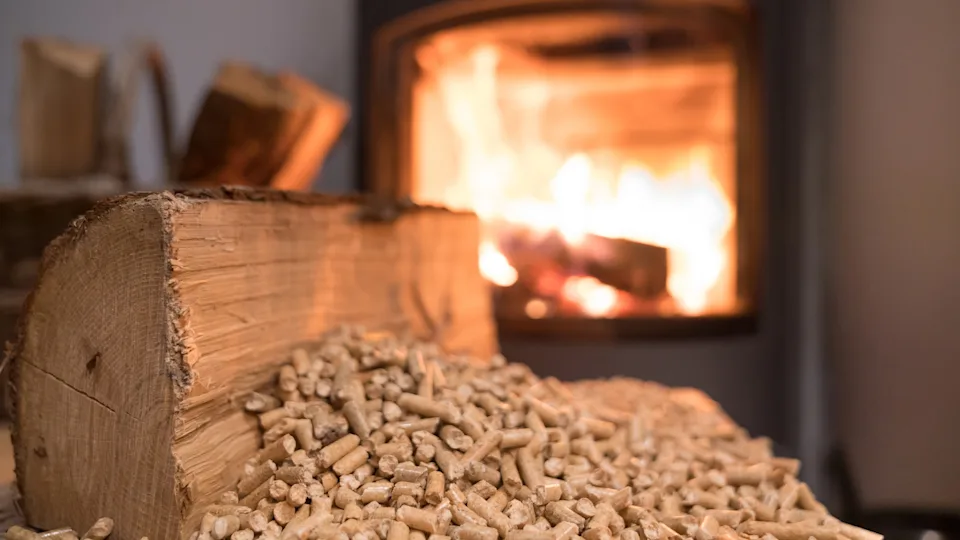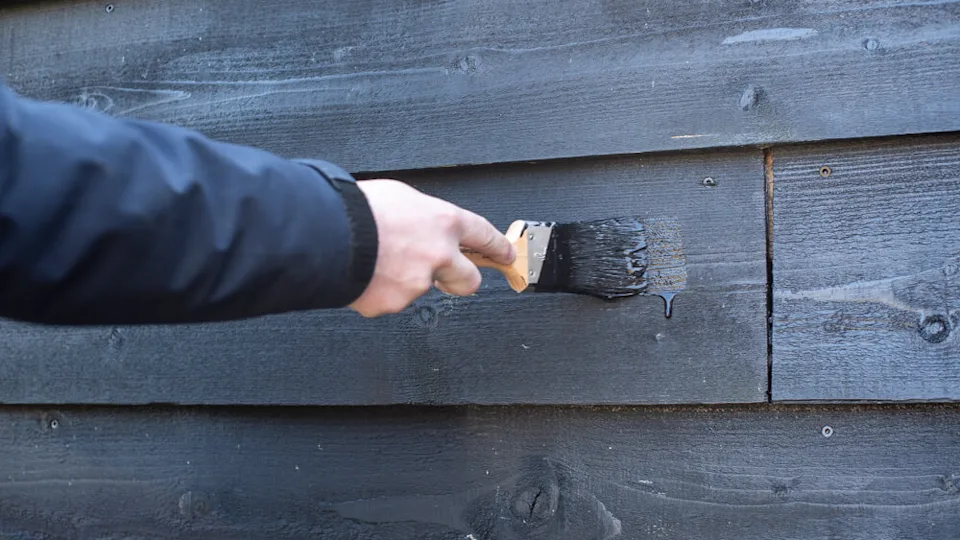Electrics in log cabins
When we buy a Log Cabin there are a lot of considerations, not only what it looks like but the size, style, the quality of the log cabin and price. We also have to consider whether it is permitted development or whether it needs planning permission. If we want to have electrics in our log cabins we also have to consider Building Regulations.
As well as being a reasonable fitter I do have experience of electrics in log cabins as I’m also a qualified electrician.

Important
If you are intending to install an electrics in your log cabin and are aware of building regs then please skip most of this but please do read at least the last section in this post which talks about the quirks of installing electrics in log cabins and things you should inform your electrician about.
Competent ...ish
I’m a member of a ‘Competent Person Scheme’ and on the TrustMark Government Register. Not all electricians are, nor are they required to be. This is what I’m currently approved to work on:
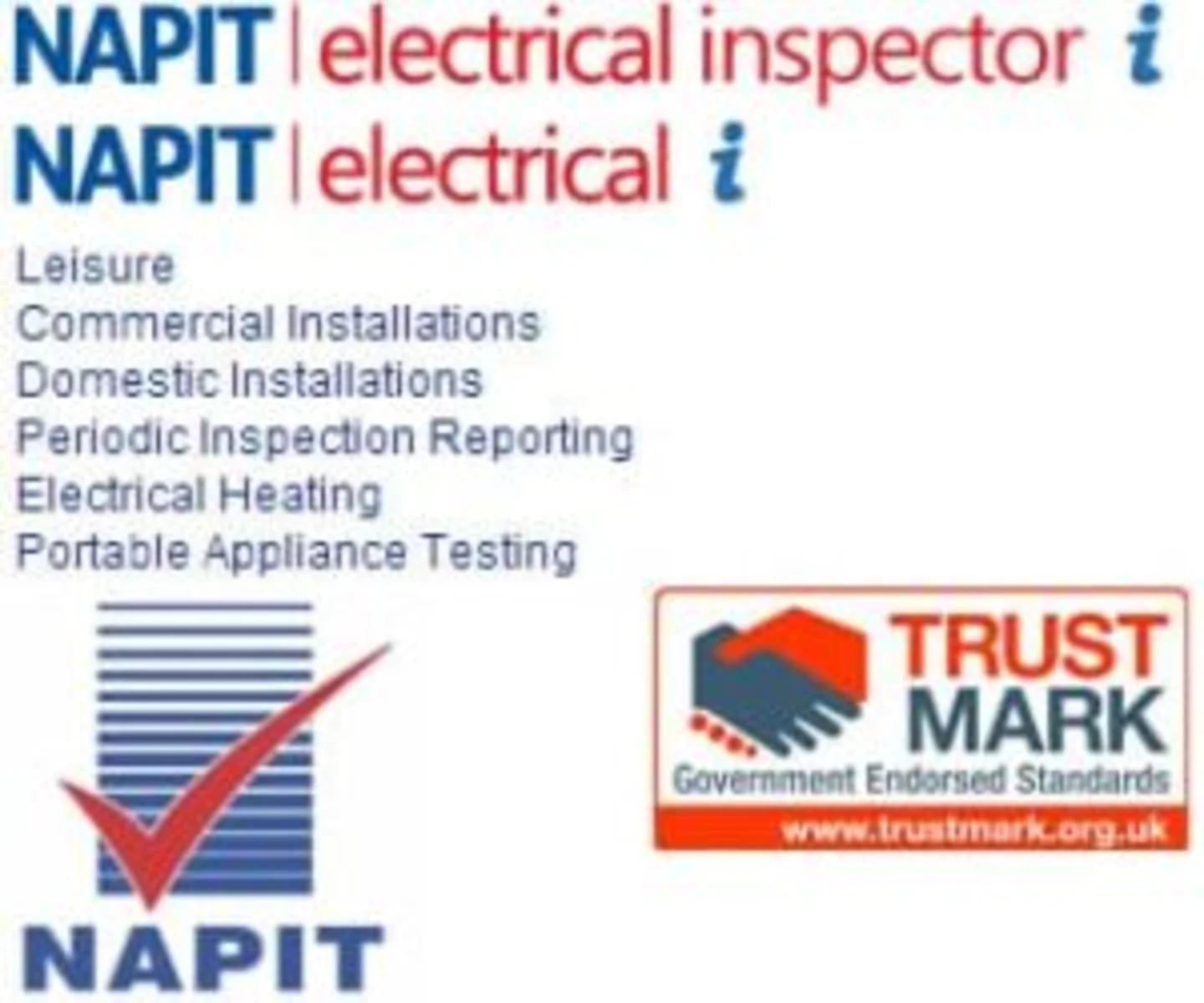
Electricians
There are three types of people who can install electrics in your log cabin.
An Electrician who is registered with a ‘scheme provider��’.
An Electrician who is not registered.
You or a friend.
Any of these people can install the electrical system in your log cabin.
BUT there is a big difference in the way it is executed and completed due to the current Building Regulations.(https://en.wikipedia.org/wiki/Building_regulations_in_the_United_Kingdom)
You or an un-registered electrician
However, you MUST inform your Local Building Control BEFORE you do anything. They will generally ask for a description of the installation, diagrams and details of the level of experience and knowledge of the installer. They will want to visit and check on the stages of work before and during the various stages. When the work is completed and BEFORE it is energised they will visit your log cabin. They will inspect the installation. It will include ensuring it meets the wiring regulations and they will test and certificate it for you. There may be a charge for this service.
Part P of the building regulations
In January of 2005 the Part P of the building regulations came into effect. Part P is the last part of Schedule One to the Building Regulations. It concerns Electrical Safety.
The approved document identifies a legal requirement for all work on fixed electrical installations in dwellings and associated buildings to comply with the relevant standards. The relevant standards are known as the 17th Edition IEE Wiring Regulations:BS7671 and any amendments current.
It also places a legal obligation that any electrical work outside is notified to the Local Building Control. Your log cabin electrical system MUST be notified.
For a concise view on Part P and the frequently asked questions that surround it please see this document: Part P FAQ
Electrical installation certificate
A certificate is vitally important for any electrical works carried out since 2005.
When you come to sell your home you will be asked for a certificate for any work carried out after this date, without it you may well have a problem to overcome before the sale. Also, should you have a fire, this is one of the first things asked for by your insurance company. Without a valid certificate your claim may be void.
This is an example of a certificate that should be issued with your Log Cabin electrical installation. You will notice it has one page for the main house consumer unit and another for the log cabin consumer unit.
Registered 'competent person'
With the suitable qualifications and experience an electrician can join a Competent Person Scheme (CPS): There are several of these schemes that cover not just electrical installations but also Heating, Roofing etc. Here’s a few of them:
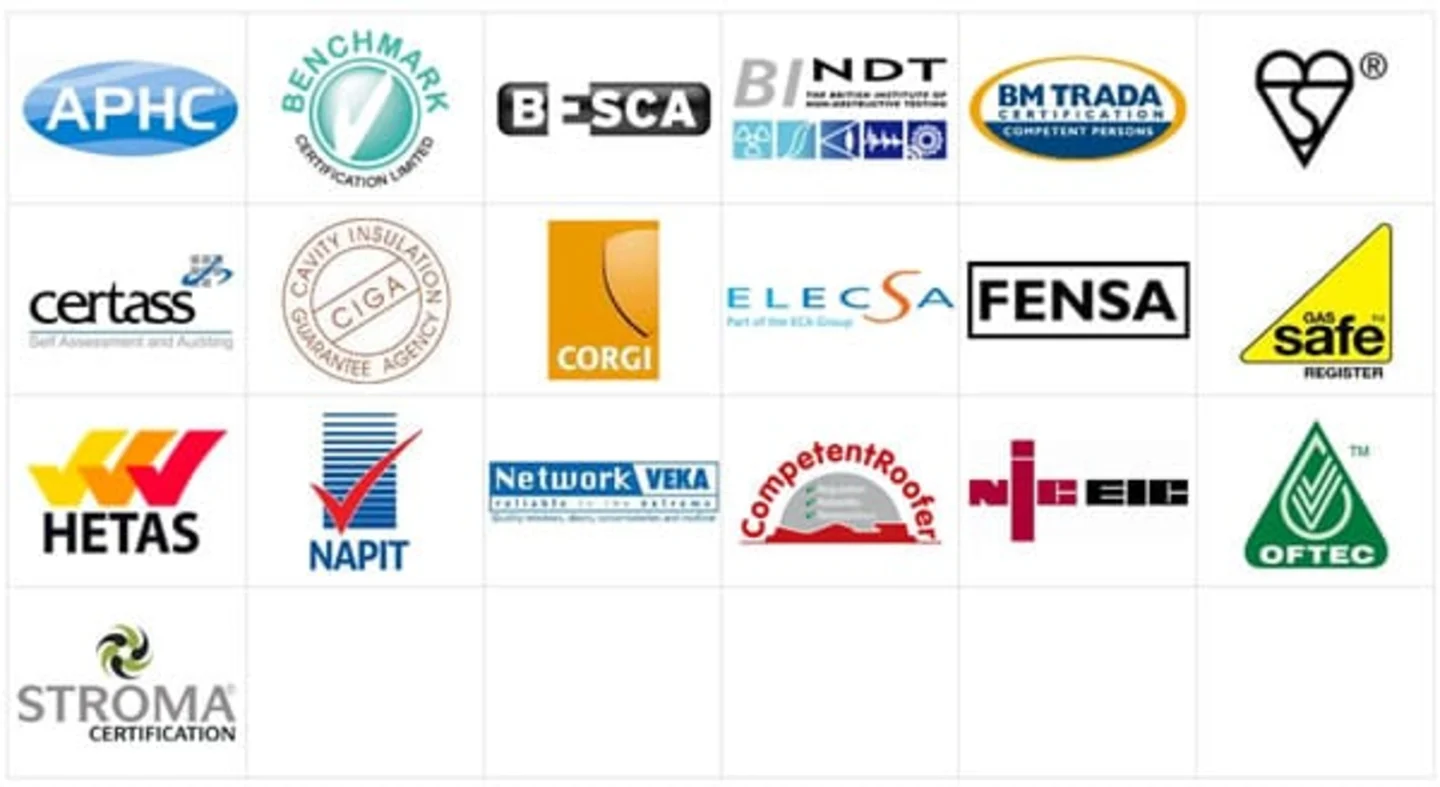
If an electrician is a member of this scheme it means that he is able to self certify his or her own work. It also means that they are assessed yearly, their work is monitored, qualifications are up to date and that their test equipment is properly calibrated. Also, very importantly, that they are fully insured and their work is guaranteed.
They are assessed yearly that they can correctly test and issue an Electrical Installation Certificate. They can then register the installation with your local building control and as they can self certify they are exempt from informing Local Building Control before an install and only do so following the installation and testing.
By employing a registered electrician you are ensuring that the installation fully complies with all the regulations.
I recommend you always use an electrician who is registered with a Scheme provider as it takes away all the responsibilities from you. I would also recommend that if they state that they are registered that you check their credentials here: https://www.competentperson.co.uk/ or with their registered body.
Electrical safety
Electricity is not something to muck about with as we all know, it’s dangerous stuff.
There are fines of up to £5000 for non compliance with Part P of the Building Regulations.
If you do not have sufficient knowledge to Design, Install and Test an installation to the current wiring standards do not even consider attempting it as it could be a very costly mistake.
Electrical installation in your log cabin
With the law and regulation bits out of the way, let’s now look at the installation itself.
Before you can do anything you need to plan out exactly what you want to power in there. We often use our log cabins as garden offices, so let’s take a look at that scenario.
You obviously need lights in your cabin, maybe a couple inside and one outside light on a PIR. You’re going to be running a couple of computers, perhaps a music player, a printer, charger, you’ll probably want a cup of tea so make allowance for a kettle. You may also like an outdoor socket for your electric mower or a spot of DIY.
Keep a note of all these items, and also any that you might be likely to use in the future.
This will give your electrician an idea of the amount of power you will be requiring. They will then design the system to account for that maximum power usage. Iif they’re anything like me they will also allow for future proofing and design their system higher than your basic requirement.
When you ask an electrician to quote for your work you can expect him to use one of two ways to install the electrical system in your log cabin. Which method is used will depend greatly on your power requirement.
First method - Consumer unit
The first method is to take a power directly from your main consumer unit. This is the preferred method. If there are none spare, they will introduce a smaller consumer unit from the mains to supply your cabin. In any case this supply will be RCD protected.
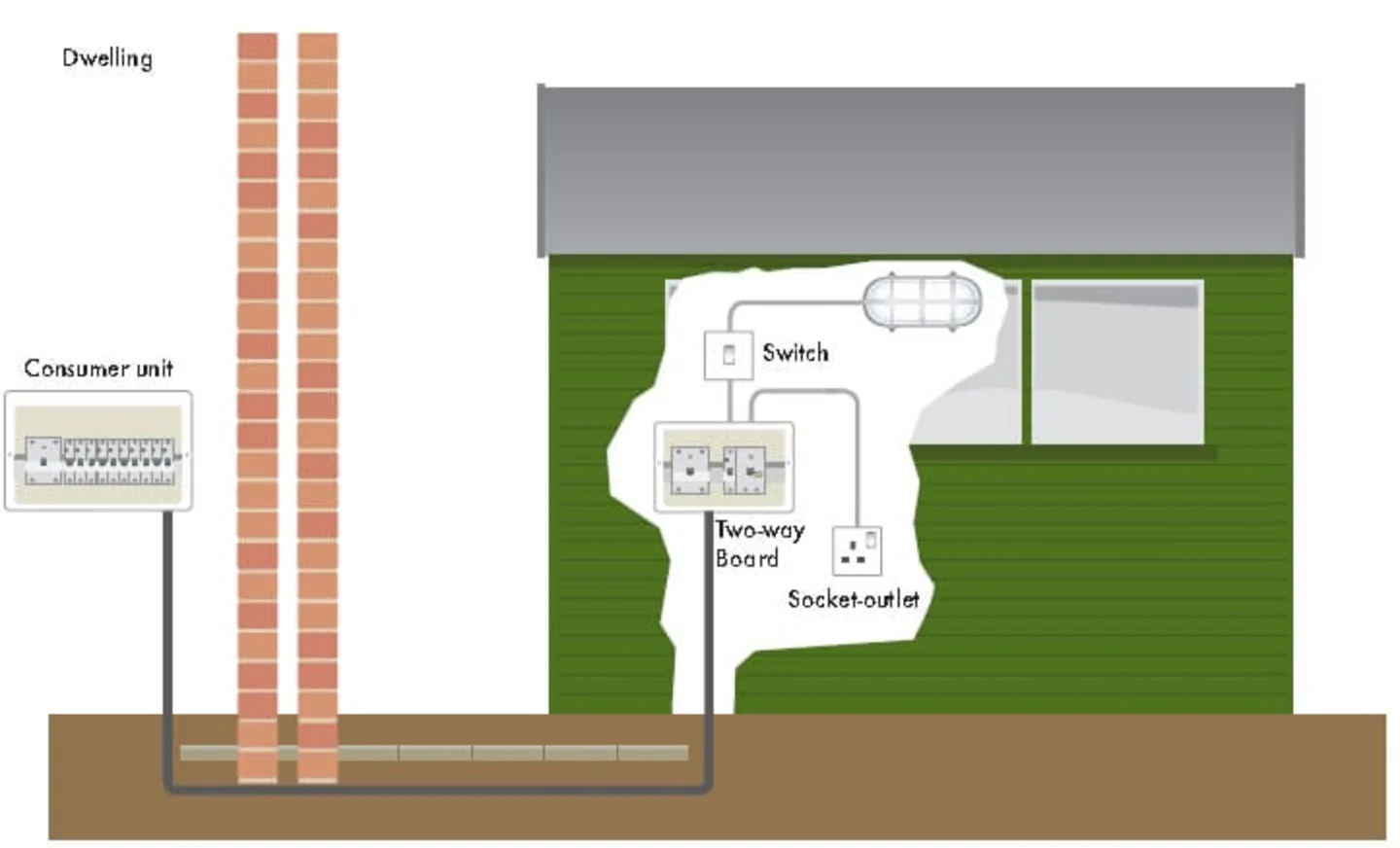
Second method - existing house socket
The second method is only used with a low power requirement and is taken from your existing house socket circuit and only if that circuit is suitable and capable of additional load:
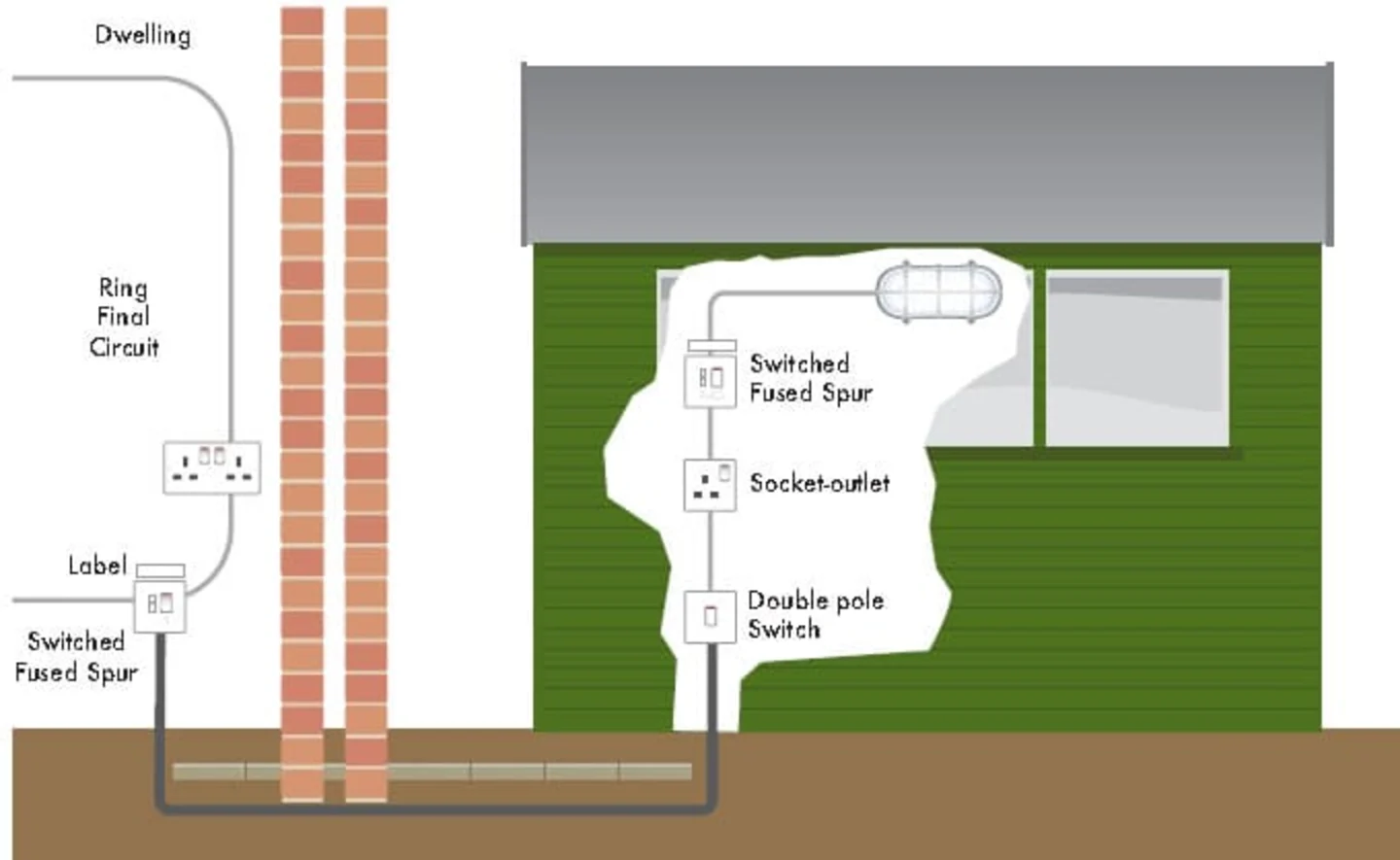
It is unlikely this method is used for anything other than a single light and a single socket and only if the log cabin is very close to your house.
In both cases an electrician will use armoured cable to supply the log cabin. This cable can either be fixed in clear site of immovable objects such as walls and possibly fences or buried in the ground. As a rule of thumb it will be buried to a depth of one and half spade depths, about 500mm. Ideally, it should be buried deeper across flowerbeds or vegetable gardens. You can often save money by creating a trench for the cable yourself before your electrician arrives.
When your electrician designs your electrical system he is going to base it on your power requirements, the distance away from the main incoming supply and the condition and rating of your supply. There are of course other factors but this is all he needs to know from you as the customer to be able to quote for you.
Information to gather for an electrician to quote:
Number of lights and sockets in your log cabin.
Power requirement: You can either add up the watts or amps of each electrical item or tell the electrician what you intend to use and he will make the calculations.
Distance from the main supply or consumer unit.
Condition of your consumer unit and whether there are any spare ways within it.
Route of the supply cable to your log cabin and whether you will be digging the trench yourself.
Exit route from your consumer unit in the house to the outside.
When you ask for a quotation of your system here’s a handy form you can use: Electrical Quotation Form
The quirks of log cabins when installing electrical systems
If your electrician is not experienced with installing a system in a Log Cabin you need to make them aware that it is a bit quirky and that they’ve got some extra considerations to make when installing it. If they’re not experienced or you don’t tell them I guarantee you’ll be calling them back!

All electricians, or at least the good ones want to do the best job they can. We’re also sticklers for neatness, we like our wires to be straight, no twists, our terminals to be tight and well trimmed and above all we love everything to look lovely and professional. To give the perfect finish within your log cabin we will want to use trunking. It’s this trunking that causes the problems. So, before they carry out the work tell them that the log cabin MOVES!
It can move a lot as well, some of the big 58mm log cabins and thicker can move up to 70mm over the course of a year, this is an inherent property of timber and entirely normal, it will expand and contract according to humidity, weather and other factors. This movement is what will cause you to call your electrician back as all his lovely neat trunking will fall off the walls. Or at worst, create splits and cracks in your logs where the trunking is screwed without an expansion gap. This will create splits in the logs!
Please make your electrician aware of this and suggest the following:
Keep trunking low down on the first log with ‘T’ pieces going up to sockets
Create an oval in the trunking and do not screw it fully tight allowing the logs to move underneath it.
Allow enough slack in the cables for the expansion
NEVER fix logs together, this is very important when mounting the consumer unit as it is often more than one log high. If expansion is not allowed for the logs will SPLIT.
Consider using round conduit pipe outside the building entirely. The saddles that attach it will allow expansion and it will look a lot nicer inside. This is my preferred method and I tend to hide it around the foundation beam and ‘T’ up from it. The corner crosses of a log cabin are also very good for hiding conduit.
If you are insulating the roof of your log cabin consider lighting circuit cables on top of the roof.
Further information on electrical installations
These publications are handy to read regarding electrics in and around your home:
If you require further information on the best way to install electrics into log cabins please let me know and I’ll help where I can.
About the author: Richard
Meet Richard, a dedicated professional with a rich history at Tuin, contributing 25 years of experience within the garden timber industry. With an expertise in garden buildings. From design, manufacturing and installation for a range of timber buildings. Sheds to log cabins and all the way up to timber framed houses. In his time he had worked with experts all over europe, and also included his own personal experience of installing and testing Garden Buildings from a range of companies, models and sizes. You will find a majority of his blogs to include expert installation advice for your Log Cabin. Information on how timber reacts to different environments and the best way to preserve your garden buildings.





